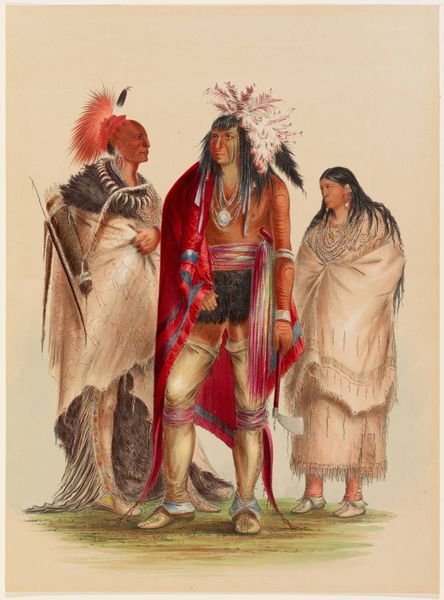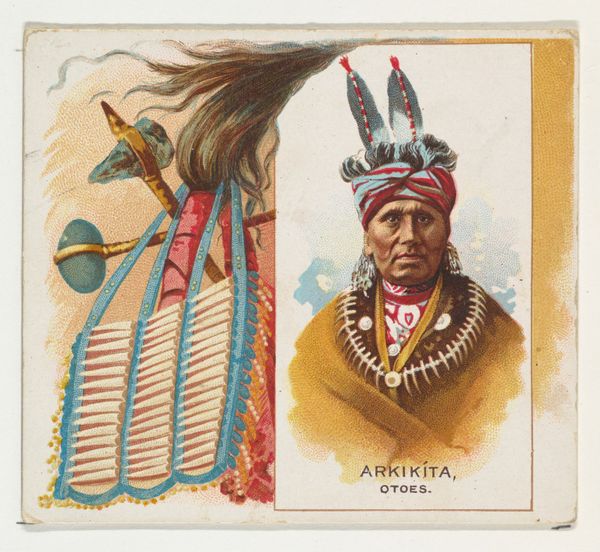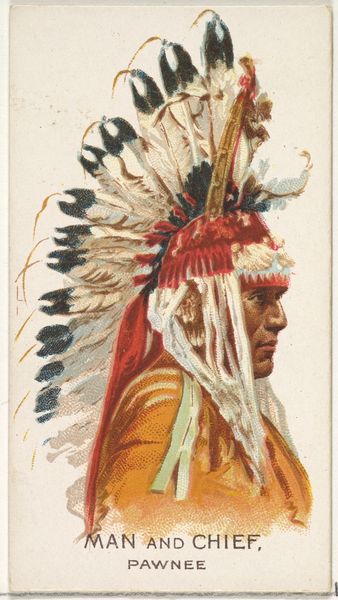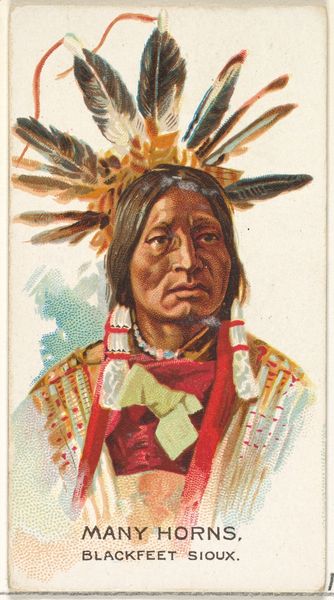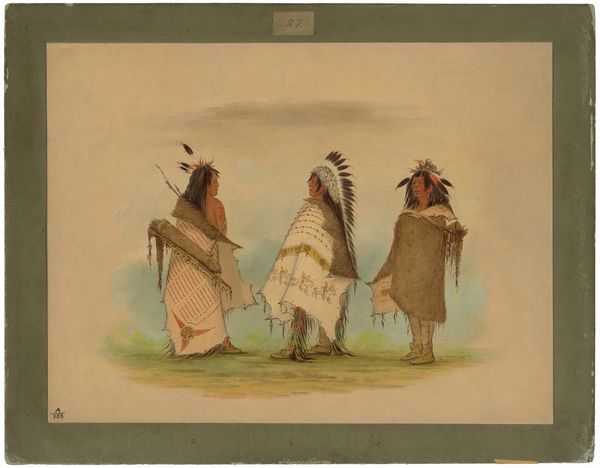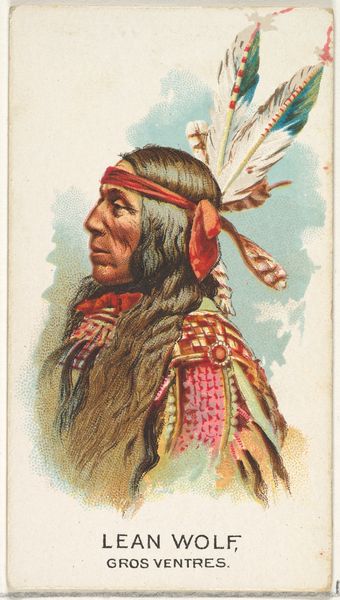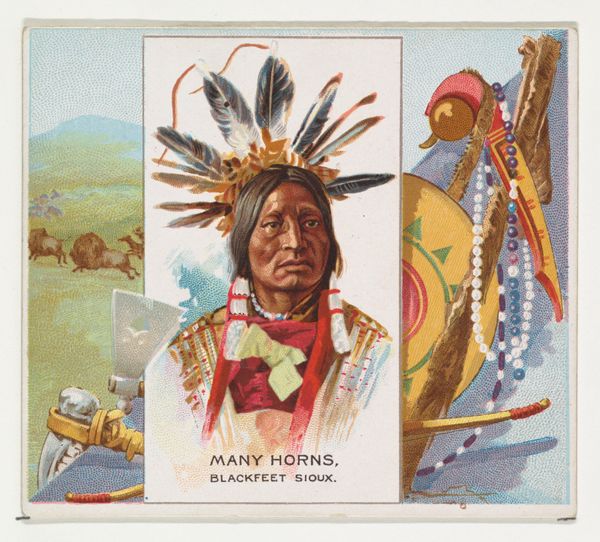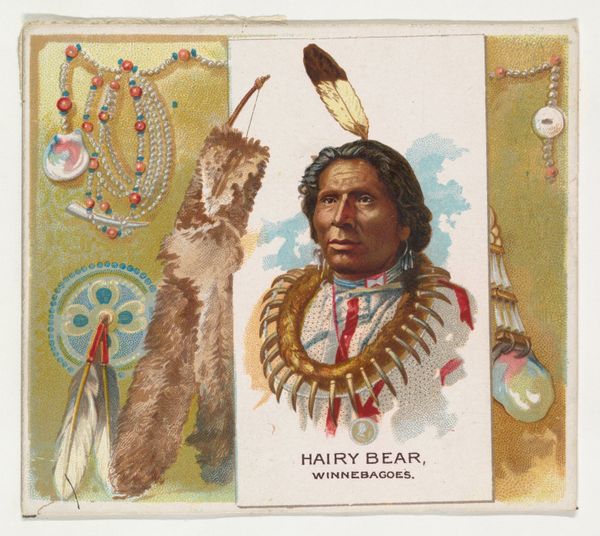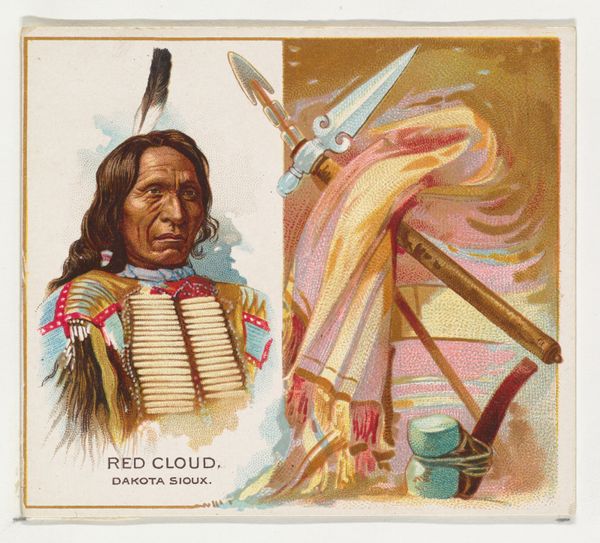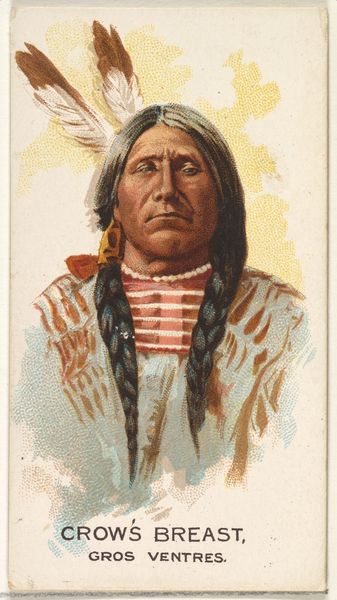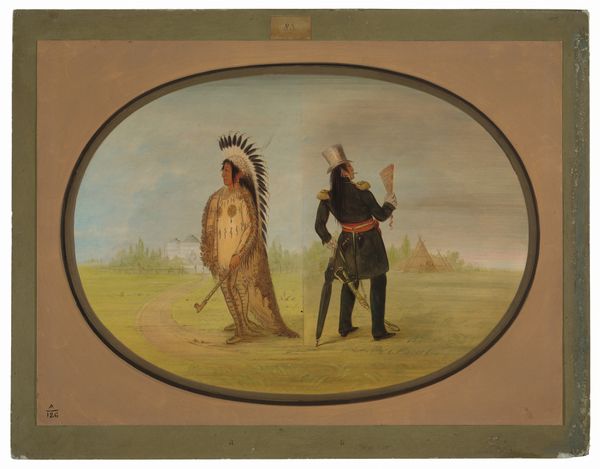
paper
#
portrait
#
figuration
#
paper
#
romanticism
#
watercolour illustration
#
watercolor
Dimensions: 17 1/2 x 12 1/16 in. (44.45 x 30.64 cm) (image, sheet)
Copyright: Public Domain
George Catlin made this lithograph of Wi-Jun-Jon in the 19th century. It portrays the complex cultural dynamics between the United States and Native American tribes at that time. Split in two, the print shows Wi-Jun-Jon, an Iowa tribe member, in traditional dress on the left, and in European finery on the right. The contrast highlights the pressure on Native Americans to assimilate into white society. Catlin uses visual codes – clothing, accessories, and posture – to convey the transformation. Wi-Jun-Jon visited Washington D.C. and New York City. This visit, like many others, was part of a broader historical pattern of interaction, negotiation, and cultural exchange but also hints at underlying power dynamics. The institutional context of the trip, including government policies and public perceptions of Native Americans, deeply influenced the encounter. It's a moment frozen in time, yet filled with echoes of a complicated and often tragic history. Further research into the Iowa tribe, Catlin's writings, and government records can offer greater insights into the cultural and social meanings embedded in this image.
Comments
No comments
Be the first to comment and join the conversation on the ultimate creative platform.
